By Anthony Vatterott
There is a lot we can learn from disruption. In supply chains, the firms that correct disruptions quickest grow fastest. The ones that wait for the supply chain to catch up will not survive. There are plenty of stories from disruptions past that help us understand that much of what we are experiencing in shortages, stockouts or lack capacity is fundamental to supply chain management ethos: supply chain managers are expected to anticipate the cost of disruptions and their job is to make the impact of disruptions to the supply chain as minimal as possible. A good supply chain manager plans for the worst, while managing to the best in class. One prior disruption that may help us to understand this current disruption due to Coronavirus is the US Longshoreman strike of 2015.
When West Coast ports went on strike during collective bargaining negotiations in 2014-2015, for 10 days in February 2015, the 29 ports on the West Coast of the United States were completely non-operational. Cost estimates at the time anticipated a potential $2 billion dollars per day would be lost, and a total impact to US Economy was estimated at 1% of GDP [1].
The mean lead time for auto manufacturers to ship a container from Japan to the Pacific South west increased in from 11.9 days in 2014 to 26.9 days in February 2015 and added at least 50 hours to the average berthing time—the time in port—for a container ship at Port of Long Beach. Other ports like Seattle suffered additional berthing times of from 80 to 100+ hours [2]
The Port of Oakland at the time stated it would take between 6-8 weeks to catch up on the backlog of container ships.
In response to the delays, businesses had to be agile in adjusting the expectations of production, operations and distribution of their products in the United States while at the same time resolving how best to move forward and prevent the same critical disruption in the future. Luckily, the port strike’s timing had two strokes of fortune helping to change the future of shipping in this country: 1) Shippers were already moving their deliveries to East Coast and Gulf Coast ports; and 2) the Chinese New Year had just started—and in China this means most factories delay operations for weeks while families celebrate the holiday—so the volume of new ships arriving at US ports would at least be reduced in the near term. However, the longer-term impact on the volume of deliveries to West Coast ports was directly affected by the 14,000 Longshoremen who held out for a new contract.
What can be learned from prior experience in SC disruptions is that we in business—for all of our long-term forecasts and multi-year strategic objectives—are not necessarily and definitely not immediately—aware of how international delays, shut-downs and interruptions to supply flows affect the average consumer, until the impact is felt directly by each of us.
As the response to COVID-19 take on its own critical mass, and as we adjust to a ‘new normal’ where we directly encounter the supply chain disruptions of a global pandemic, we can take the opportunity to evaluate the weaknesses in our transportation networks, supply lines and inventory and warehousing policies under necessity…and this will ultimately help us to deal with other human capacity-constrained business practices as we look ahead to recovery. In fact, some of the same logic for a man-made disruption to the supply chain can be adhered to for a pandemic and the interruption to the flow of goods and services.
Distribution flows: where are the bottlenecks? What are the lead times? When are plants expected to come online? The network orientation of the supply chain allows the practitioner to answer the question of what and where do we need to focus our immediate attention?
Transportation Channels: currently truckers are racing to meet the store demands for functional products. Foods and sundries, staple goods and grocery stocks are being replenished as a rapid pace. There remains a critical shortage of truck drivers and therefore the constraint is in skilled workers to move goods around the country. Some firms have historically outsourced their office and administrative support functions, even to other countries. The pressure on trucking demands should push the cost of labor for truckers upward as capable drivers attempt to cover as many loads as feasible. The premium cost of additional demand for products however should be off-set by a decreasing price of oil [3] and therefore fuel price reduction, thus reducing the potential for perishable product wastage as was seen during the 2018 Brazil trucker strike, when lack of animal feed delivery resulted in the death of millions of pigs and chickens [4], compromising food security.
Production: at the same time, healthcare organizations demand new production of critically necessary medical equipment and supplies, including durable goods like sheets and PPE, as well as disposable goods like gowns, booties and masks. Companies will be manufacturing these products in this country, which will bring back some manufacturing opportunities from overseas. How fast can we turn on new production plants for necessary supplies?
Inventory: currently there is a need for shelf stockers and material handlers to keep products moving in and out of factories, warehouses and stockpiles. This requires materials planning, space management and increased inventory turnover resulting in shorter cycle times and therefore even more package or material handlers.
Forecasting: and this is a difficult topic; how long will it be that we need to supplement traditional manufacturing flows with new production demands. It is natural to want to throw all resources behind a strong production and distribution effort and careful consideration of maximum and minimum impacts of the spread of disease and its containment are constantly changing the expectations of any forecast. Forecast planners must be agile and flexible while adjusting (on the fly) to changes in where, how many and how people are being impacted by this disease. Because of the rapid transmission of this virus, a forecast must consider that by the time products are ready for use, they may be needed somewhere else of more critical demand. Anticipating the real future demands given the uncertainty of demand, is one of the essential factors in successful production planning, material flows scheduling, and supply chain management.
Where the port lockout of 2015 was only 10 days, the time to recover was predicted to take 3-9 months. The result of the aggressive recovery by West Coast ports did not prevent firms from seeking alternative channels for distributing their goods from overseas to the United States interior. As new information tells us the planning time for this response to Covid-19 is up to 18 months, we can proceed with the expectation of long-term, and potentially irreversible changes to the way we conduct business. Innovation and rapid development of manufacturing capacity, more responsive supply chains and new forms of distributed workflow will evolve from the response to this pandemic, and we will be a more resilient, flexible and powerful global economy because of it.
High value goods impacted by the west coast port lockout [5], and potentially undermined by the Covid-19 response globally, include (amount of product type acquired through export or import):
Non-metallic mining (14.3% in exports, 5.1% in imports)
Agricultural chemicals (10.6% in exports, 8.9% in imports)
Plastics and synthetics (14.5% in exports, 16.5% in imports)
Other chemicals (14.3% in exports, 11.4% in imports)
Petroleum refining (7.3% in exports, 6.3% in imports)
Agriculture, construction, mining and oilfield machinery (8% in exports, 16.8% in imports)
Metalworking machinery (4.6% in exports, 24.9% in imports)
Special industry machinery (4.4% in exports, 46.4% in imports)
eneral and miscellaneous industrial machinery (10.8% in exports, 32.5% in imports)
Computers (1.4% of exports, 17.8% in imports)
Office equipment (1.6% of exports, 24.1% in imports)
Service industry machinery (6.5% of exports, 27.5% in imports)
Electrical industry apparatus and distribution equipment (5.4% of exports, 27% in imports)
Household appliances (9.5% of imports, 40% in imports)
Electrical lighting and wiring equipment (4.8% of exports, 37.4% in imports)
TVs, VCRs, radios and phonographs (7.9 of exports, 41.4% in exports)
Communication equipment (1.7% of exports, 10.5% in exports)
Electronic Components (1.3% of exports, 9.1% in imports)
Because these products rely on assembly and production in plants currently shuttered or under restricted production schedules in China, Japan and Germany for example, the lead time to recover production levels depends on the speed with which China and other trade partners get production back on line. In the near term, the United States will need to develop manufacturing and production capacity for such products that are critical in treating the infected.
Low value items of high export [5] from the United States–such as meat products (39.5% of exports), dairy (41.5% of demand in exports) and canned or frozen foods (41% of exports) will likely remain in high demand among trading partners and therefore should be easily replenished, as the process of manufacturing such goods is not labor intensive and has been highly automated in the United States. However, the immediate impact of stockpiling reduces these available supplies and therefore also delays the shipment of such products to other countries where they are needed. The critical linkage in the Supply Chain is the frozen/refrigerated containerized trucking network. Meat, the highest value product of food categories of goods, may not immediately be able to meet the need of increased demands. In the near and mid-term, these products should find their way to replenishment; however the lack of available product on shelves during such disruptions points to the underlying need for commercial drivers, stockers, material handlers and refrigerated trucking services.
If the supply chain interruptions of the Coronavirus response globally connote anything, it is that even as supply chain practices develop in sophistication—and even as new software and platform technologies arrive to streamline transportation and warehouse management—we must still adhere to the tried and true business continuity foresight that allows for proactive response to emergent and dynamic disruptions. For example, consider the demand for roll fabric or roll mesh for gowns or medical masks, or the elastic webbing for straps on personal protective equipment: the likelihood for such demand is unprecedented unless we look several generations into the past. However, if we look at other more recent global disruptions like Ebola, SARS or H1N1, the need for such items appears more evident, though on a much more limited scale.
While business continuity is a popular concept in times of trouble, it tends to be overlooked when the ample time to prepare is available.
Firms that are able to anticipate potential disruptions, develop a priority or severity matrix of the risk of interruption and the level of impact to business as usual, and implement processes and procedures to smooth out the wild speculative demands of the market, stand to both maintain market share and reduce the impact of additional costs of operations due to unplanned deliveries.
Certainly, if there is one benefit of such a disruption to be found, it is the lessons we take away from our lack of ability to respond, so that they do not happen again. Meanwhile, as we all work to provide every advantage to our essential workforce during the Covid-19 Response, we can also make note of our own supply chain weaknesses and constantly work toward removing them and replacing them with solid corrective measures to get supply lines flowing so we can better serve our customers as soon as possible.
[1]
https://www.elementum.com/chain-reaction/the-real-cost-of-the-west-coast-port-strike-pt.-1
[2] Akakura, Yasuhiro, and Kenji Ono. “A Possible Risk Reduction of the Negative Impact of Port Blockage by Disasters on the Global Trade and Economy-Case study of US West Coast Port Disruption.”
[3] Saefong, Myra P. Gas Prices Hit a 3-Year Low—And They’re Headed Even Lower
Barrons, acquired March 19, 2020 12:28 pm ET
https://www.barrons.com/articles/gas-prices-hit-a-3-year-lowand-theyre-headed-even-lower-51584635328
[4] Schlindwein, Sandro Luis, and Ray Ison. “Confronting total systemic failure? The May 2018 truckers’ strike in Brazil.”
Systems Research and Behavioral Science 37, no. 1 (2020): 119-127.
[5] Werling, Jeffrey. “The National Impact of a West Coast Port Stoppage.”
Inforum Report Commissioned by the National Association of Manufacturers and the National Retail Federation. Available at https://www. nam. org/Data-and-Reports/Reports/The-National-Impact-of-a-West-Coast-Port-Stoppage-(Full-Report). pdf (accessed May 14, 2019) (2014).

 The office as we know, at least pre-pandemic, was a ghost in the machine, a vestige of the industrial revolution. Thoughtful reflection tells the story of individual craftsmen moving from their own shops, farms, and homes, to larger collectives of workers. Workers specialized, with division of labor for mass production, achieving economies of scale. But these organizational behaviors were not in the name of worker morale, office lunches, collaborative innovation, or water cooler conversation. The driving force was the increasing scale and complexity of goods and services involved. It was no longer feasible for an individual craftsman to afford the facilities, power supply, machines and tooling, raw materials, and various specialized labor, all now required to efficiently produce high volumes of lower cost goods.
The office as we know, at least pre-pandemic, was a ghost in the machine, a vestige of the industrial revolution. Thoughtful reflection tells the story of individual craftsmen moving from their own shops, farms, and homes, to larger collectives of workers. Workers specialized, with division of labor for mass production, achieving economies of scale. But these organizational behaviors were not in the name of worker morale, office lunches, collaborative innovation, or water cooler conversation. The driving force was the increasing scale and complexity of goods and services involved. It was no longer feasible for an individual craftsman to afford the facilities, power supply, machines and tooling, raw materials, and various specialized labor, all now required to efficiently produce high volumes of lower cost goods. Richard Etienne opines, “While extroverts are celebrated for being outgoing, action-oriented and enthusiastic, introverts bring analytical thought and empathy…During the pandemic, those (latter) skills immediately became incredibly sought after. Introverts are reliable; people who take one project at a time and do it thoroughly. They’re good at deep thought and forming personal connection. That was really important during the period when companies were trying to hold onto clients…” He continues later, “The workplace was created by extroverts, for extroverts,” which likely explains a fair bit of the tension we’re seeing build right now over reverting to traditional offices. It’s worth examining to what degree the built environment has shaped the personalities of those typically promoted into your leadership. Your middle management extroverts’ cravings for constant interaction should not be allowed to constrain the productivity of your remote line worker introverts. (
Richard Etienne opines, “While extroverts are celebrated for being outgoing, action-oriented and enthusiastic, introverts bring analytical thought and empathy…During the pandemic, those (latter) skills immediately became incredibly sought after. Introverts are reliable; people who take one project at a time and do it thoroughly. They’re good at deep thought and forming personal connection. That was really important during the period when companies were trying to hold onto clients…” He continues later, “The workplace was created by extroverts, for extroverts,” which likely explains a fair bit of the tension we’re seeing build right now over reverting to traditional offices. It’s worth examining to what degree the built environment has shaped the personalities of those typically promoted into your leadership. Your middle management extroverts’ cravings for constant interaction should not be allowed to constrain the productivity of your remote line worker introverts. ( Unfortunately, even with 18 months of evidence of successful remote work, there is still a stigma to working from home. But it has evolved. The prior resistance that productivity and efficiency would falter has been disproven. Now the resistance comes from individual fears, whether conscious or not. Organizations are human constructs and like all institutions are comprised of the habits of their members. A particular category of members, middle management, has lost their sense of purpose. Without tangible daily interaction with subordinates, Covid-19 has pulled back the wizard’s curtain and the emperor has no clothes! With no line of sight to direct reports, how are they to ensure TPS reports get the new cover sheets, Peter works on the weekend, and Milton stays in his closet with his stapler?
Unfortunately, even with 18 months of evidence of successful remote work, there is still a stigma to working from home. But it has evolved. The prior resistance that productivity and efficiency would falter has been disproven. Now the resistance comes from individual fears, whether conscious or not. Organizations are human constructs and like all institutions are comprised of the habits of their members. A particular category of members, middle management, has lost their sense of purpose. Without tangible daily interaction with subordinates, Covid-19 has pulled back the wizard’s curtain and the emperor has no clothes! With no line of sight to direct reports, how are they to ensure TPS reports get the new cover sheets, Peter works on the weekend, and Milton stays in his closet with his stapler? 

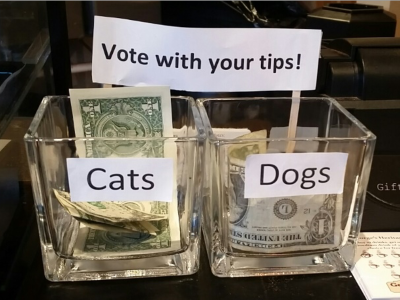

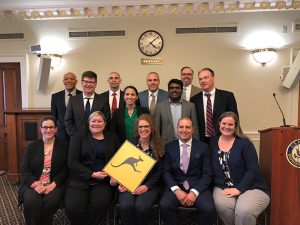
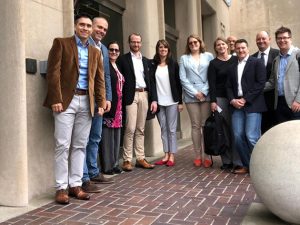
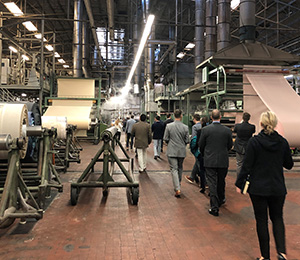


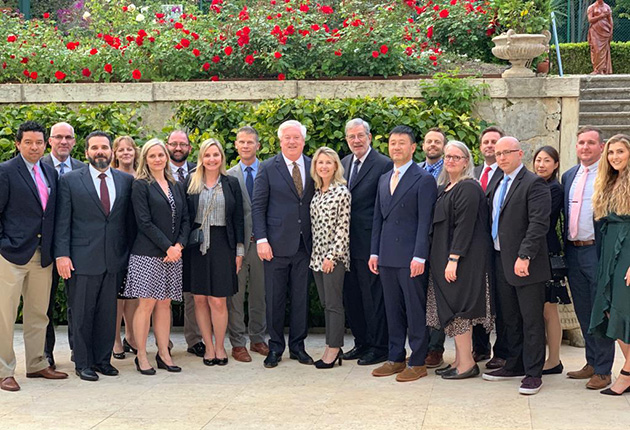
 Jeanie Sell Latz, J.D.is a member of the Bloch Executive MBA faculty at the University of Missouri – Kansas City. Dr. Latz completed her J.D. at the University of Missouri – Columbia and has served as executive vice president, chief legal officer and corporate secretary of Great Plains Energy, a Fortune 1000 publicly traded holding company. She currently consults in the area of corporate governance and holds the distinction of Governance Fellow, granted by the National Association of Corporate Directors.
Jeanie Sell Latz, J.D.is a member of the Bloch Executive MBA faculty at the University of Missouri – Kansas City. Dr. Latz completed her J.D. at the University of Missouri – Columbia and has served as executive vice president, chief legal officer and corporate secretary of Great Plains Energy, a Fortune 1000 publicly traded holding company. She currently consults in the area of corporate governance and holds the distinction of Governance Fellow, granted by the National Association of Corporate Directors. Don’t Lament…Experiment
Don’t Lament…Experiment